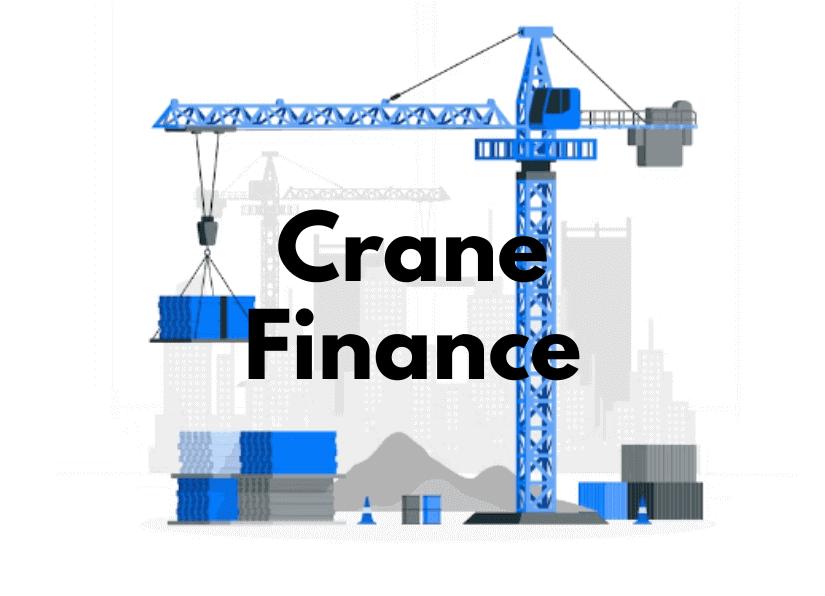
Crane Finance: Heavy Equipment Investment
Introduction
Cranes, the towering giants of construction and heavy industry, serve as indispensable workhorses in a wide range of sectors. From the ambitious skyline-altering projects in urban centers to the precise, high-capacity handling of cargo in logistics hubs, these mechanical marvels are the backbone of modern industrial operations. However, the substantial costs associated with acquiring cranes, coupled with the need for frequent technological upgrades, have led businesses to explore crane finance as a strategic solution. Explore crane finance options and key considerations for businesses acquiring these vital assets in this informative article.
The Role of Cranes in Modern Industries
In the modern industrial landscape, cranes have become indispensable tools. These powerful machines are not limited to lifting heavy materials but also excel in tasks like precision placement and transportation. In construction, cranes erect skyscrapers and position heavy structural elements. In manufacturing, they facilitate production processes by moving materials efficiently. Meanwhile, in logistics, cranes load and unload cargo containers from ships with speed and precision.
Why Finance is Essential for Crane Acquisition
One of the primary reasons businesses turn to crane finance is the high cost associated with purchasing these heavy-duty machines. The price of cranes varies significantly depending on type, size, and capabilities, often reaching millions of dollars. Moreover, rapid technological advancements in crane equipment necessitate frequent upgrades to stay competitive and efficient. Thus, businesses must allocate their resources strategically, and financing cranes can be a viable solution.
Types of Crane Financing
Several financing options cater to the specific needs and preferences of businesses seeking to acquire cranes.
Equipment Loans
Equipment loans are a common choice. In this arrangement, businesses secure a loan to purchase the crane outright. This option provides ownership benefits but may require a substantial down payment.
Equipment Leasing
Equipment leasing offers flexibility and tax advantages. Companies can lease cranes for a predetermined period, paying monthly installments. At the end of the lease, they can choose to buy the equipment, upgrade to a newer model, or return it.
Equipment Rental
For short-term projects or occasional crane needs, equipment rental is a cost-effective choice. Renting cranes allows companies to access the required machinery without the long-term financial commitment.
The Application Process
Applying for crane financing involves several steps. Businesses need to compile necessary documentation, such as financial statements and business plans. Lenders evaluate the creditworthiness of applicants, considering factors like credit history and collateral. A comprehensive application can enhance the chances of securing favorable financing terms.
Benefits of Crane Financing
Opting for crane financing rather than an outright purchase offers several advantages:
Preservation of Capital
Financing preserves working capital, allowing businesses to allocate resources to other operational needs, such as hiring skilled labor and purchasing raw materials.
Tax Benefits
Crane financing provides opportunities for tax benefits, including depreciation deductions and interest write-offs, which can significantly reduce tax liabilities.
Equipment Upgrades
Technology evolves rapidly, and newer crane models often offer increased efficiency and capabilities. With financing, businesses can upgrade to the latest technology without the burden of hefty upfront costs.
Risk Mitigation
Unexpected repair and maintenance expenses can disrupt operations and strain finances. Financing often includes maintenance agreements and warranties, providing peace of mind and financial predictability.
Considerations When Choosing a Financing Option
Selecting the right crane financing method hinges on several considerations:
Budget and Cash Flow
Assess the company’s financial situation and budget constraints to determine the most suitable financing option.
Duration of Use
Consider whether the crane will be needed for short-term projects or long-term operations.
Tax Implications
Consult with tax professionals to maximize the available tax benefits under different financing options.
Maintenance and Repairs
Evaluate maintenance responsibilities and associated costs when choosing a financing plan.
Selecting a Lender
Choosing the right lender is crucial in the crane finance process. Businesses should carefully evaluate potential lenders based on their reputation, interest rates, customer service, and the transparency of financing agreements.
Conclusion
Crane finance is a critical component of modern industry, enabling businesses to harness the power of these colossal machines without depleting their financial resources. By understanding the various financing options, carefully considering their specific needs, and selecting a reputable lender, businesses can navigate the world of crane finance with confidence. Whether it’s constructing towering skyscrapers or efficiently moving heavy cargo, cranes will continue to play a vital role in shaping the modern industrial landscape, and the right financing can make all the difference.





